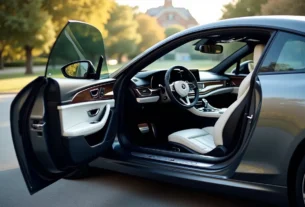Vintage motorcycles capture a timeless charm that modern bikes often cannot match. Whether the goal is to ride a piece of history or restore a classic model, purchasing a vintage motorcycle requires careful thought and research.
These machines demand attention, maintenance, and an understanding of their unique character. Below are the key factors to consider before making a purchase.
Understanding What “Vintage” Means
The term “vintage” often refers to motorcycles that are at least 25 years old. However, the definition can vary depending on collectors and organizations. Some enthusiasts use the term to describe bikes from a specific era, such as pre-1970 models, while others consider anything no longer in production to be vintage.
Determining what qualifies as vintage for your purpose helps narrow the search and set realistic expectations for price, performance, and availability of parts.
Set a Realistic Budget
Vintage motorcycles can vary widely in cost. A fully restored model from a well-known brand may command a high price, while a project bike that needs significant work might be affordable upfront but costly to restore. When setting a budget, include expenses for restoration, replacement parts, and regular maintenance.
It is also wise to factor in transportation costs, as many buyers find their dream bike outside their local area. Services like Kentucky motorcycle shipping can simplify the logistics of getting the motorcycle safely delivered without adding unnecessary mileage or wear.
Research the Model and Its Availability
Before buying, research the specific model that captures your interest. Learn about its production years, common mechanical issues, and available replacement parts. Some older models may have limited parts availability, making repairs more expensive and time-consuming.
Online forums, motorcycle clubs, and vintage shows can provide valuable insights from experienced owners. Gathering this information beforehand prevents surprises after the purchase.
Inspect the Condition Thoroughly
A detailed inspection is crucial before finalizing any deal. Examine the frame for signs of rust or repair, which could indicate past accidents or poor storage. Check the engine for leaks, unusual noises, or missing components. The electrical system, tires, and suspension should also be reviewed carefully.
If possible, bring along a mechanic familiar with vintage motorcycles to evaluate the bike’s mechanical integrity. Even if the motorcycle appears well-maintained, older machines can hide internal issues that only a professional can detect.
Verify Documentation and Ownership
Authenticity and proper documentation are essential in the vintage motorcycle market. Request the title, registration, and any service records from the seller. These documents not only confirm ownership but also help verify the motorcycle’s history.
Matching frame and engine numbers adds value and authenticity. A lack of paperwork can complicate registration, especially for older models that have changed hands multiple times.
Decide Between Original and Restored
Collectors often debate whether originality or restoration adds more value. An original motorcycle in good condition may be more desirable to some buyers, as it retains the factory parts and finish. Restored bikes, on the other hand, often provide a cleaner look and improved functionality.
Consider how the motorcycle will be used. For regular riding, a restored model might be more reliable. For display or investment purposes, originality could be more appealing.
Factor in Maintenance and Storage
Vintage motorcycles require consistent care. Unlike modern bikes, they often need frequent tuning, oil changes, and part replacements. Storing the motorcycle in a controlled environment helps preserve its condition.
Exposure to moisture and temperature fluctuations can lead to rust and deterioration of delicate components. Owners should also consider joining vintage motorcycle clubs or communities to access knowledge, parts, and support.
Final Thoughts
Buying a vintage motorcycle is both an emotional and practical decision. Each bike tells a story, reflecting the design and engineering of its era. Taking the time to research models, inspect carefully, and plan for maintenance ensures the purchase remains rewarding.
Whether the goal is to restore a classic, add to a collection, or simply enjoy the nostalgic feel of a bygone age, thoughtful preparation will help make the experience a lasting success.




